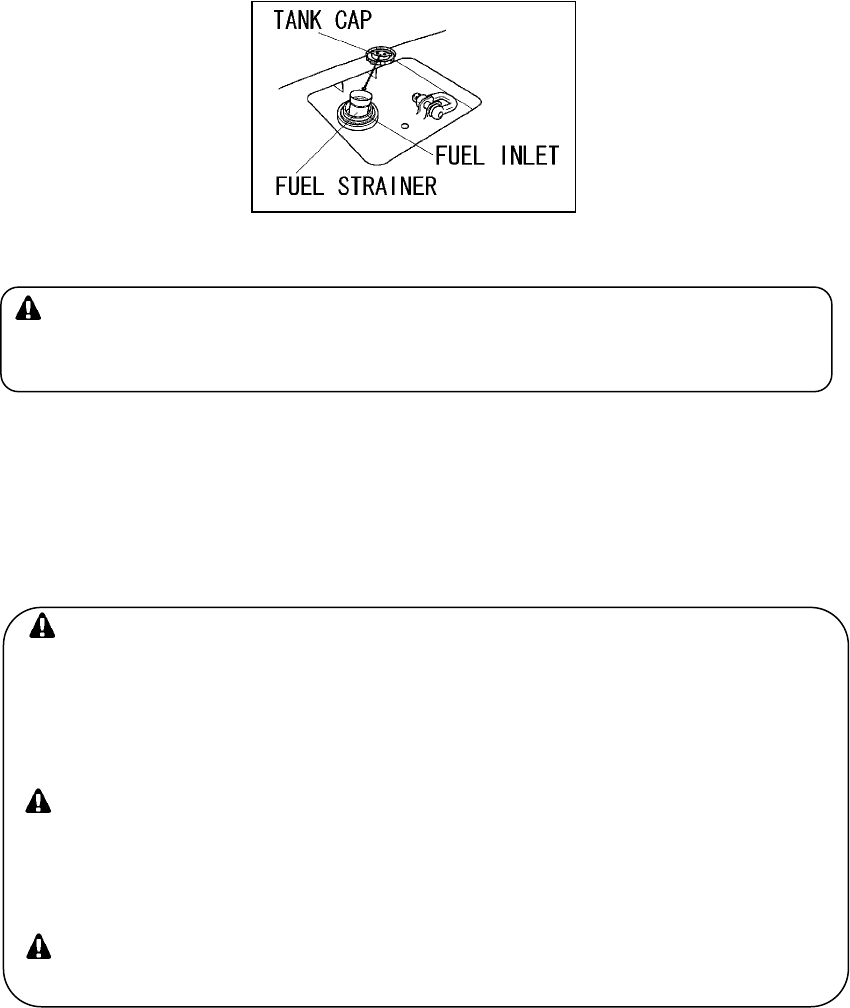
<Caution>
z Use Diesel fuel, ASTM D975 No.2-D in the event ambient temperature reaches
down to -5 .
z The engine is designed to use either No.1-D or No.2-D Diesel fuel. However,
for better economy, use No. 2-D Diesel Fuel whenever possible. At
temperatures less than -7(20 ), No.2-D fuel may pose operating problems
(see “Cold Weather Operation which follows). At colder temperatures, use
No.1-D fuel (if available) or use a “winterized” No.2-D (a blend of No.1-D and
No.2-D). This blended fuel is usually called No.2-D also, but can be used in
colder temperatures than No.2-D fuel which has not been “winterized”. Check
with the services stations operator to be sure you can get the properly blended
fuel. Note that Diesel fuel may foam during a fill-up. This can cause the
automatic pump nozzle to shut off even though your tank is not full.
z Always use the fuel strainer.
z Fill the fuel tank slightly less than the FULL tank.
6-4 Checking Fuel, Engine Oil and Water Leakage
Caution : Fire
z Do not use this equipment when a leak is found. Repair the equipment before
use.
Be sure to check any leakage for fuel, oil and coolant/water at the hose
connections by opening side doors. Whenever checking any fuel leakage, turn
the fuel lever OPEN and be sure to close the fuel lever after checking.
6-5 Checking Battery
Caution : Injuries to eyes and skin
z Battery fluid contains diluted sulfuric acid. Avoid contact with eyes, skin or
clothing.
z If the acid comes to contact, especially with eyes, flush with a lot of water, and
contact your physician immediately.
Caution : Explosion
z Do not use the equipment or charge the battery, in the case the battery fluid
level is lower than the LOWER level.
z Battery may emit some combustible gas, so keep it away from fire and sparks.
Caution : Fire
z Battery may emit some combustible gas, so keep it away from fire and sparks.
- 17 -


















